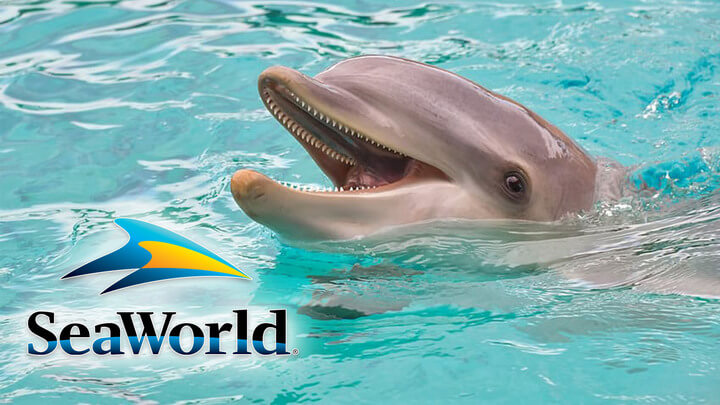SeaWorld will no longer allow dolphin surfing in its marine parks. Soon, it will also stop allowing trainers to stand on the animal’s noses during its shows.
The decision to stop dolphin surfing comes following pressure from animal rights activists and celebrities, including Alec Baldwin. The “30 Rock” star recently attended SeaWorld’s annual online meeting, where he requested the marine park ban “harmful circus-style” shows.
“When will SeaWorld stop allowing trainers to use dolphins in harmful circus-style shows that display cruelty?” he asked. He added that the park disguises “riding on their backs and standing on their faces” as entertainment.
He’s not the only celebrity to speak out. Noah Cyrus, Jessica Biel, and Ewan McGregor are among a number of stars that have condemned the marine park. Comedian Russell Brand once called it “a stain upon humanity posing as entertainment.”
Major travel companies and airlines— including British Airways, United Airlines, Virgin Holidays, WestJet, and Air Canada—have cut ties with SeaWorld due to animal welfare controversy.

Dolphins in Captivity
While much of the scrutiny around SeaWorld focuses on its captive orcas, the marine park also has many other animals, including seals, penguins, and dolphins, in captivity. Dolphins are often made to perform in shows and participate in one-to-one encounter experiences with tourists.
In the wild, dolphins swim around 100 kilometers a day, according to Ric O’Barry’s Dolphin Project. Their life in captivity keeps them in small cramped concrete tanks. They are often placed in unfamiliar groupings, which can cause them to lash out and become aggressive.
The Dolphin Project notes that many captive dolphins have to receive medication for ulcers and depression. This is “to alleviate the frustration of captivity.”
Dolphins that regularly perform in shows and interactions have also been observed with wounds, abrasions, and raw beaks from pushing trainers and tourists through the water.
“The conditions for captive marine mammals cannot compare to their natural ocean environments in quality, or size,” says the Dolphin Project. “Enduring a lifetime of frustration for human amusement serves no purpose other than to enrich the owners of captive dolphin facilities.”



